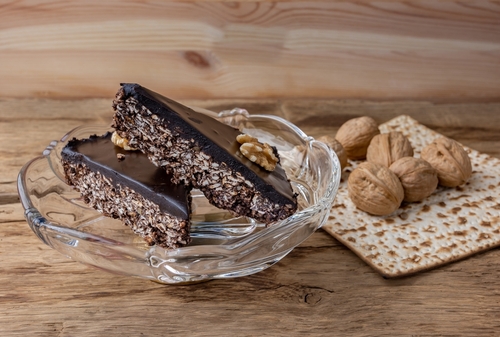This week we read Parshat Vayakhel and next week we read Parshat Pekudei. They are most commonly read together, with the exception of Jewish leap years (as is this year).
In Parshat Vayakhel, we see the culmination of the past few weeks’ Parshiot (Torah Portions) as the instructions given to Moshe and the Jewish People are put into practice. Moshe assembles the nation and once again commands them to keep Shabbat and tells them Hashem’s instructions regarding the making of the Mishkan (Tabernacle). Eager to participate in the building of the Mishkan, the people bring so many donations of the needed materials that Moshe has to ask them to stop. They bring gold, silver and copper; blue-, purple- and red-dyed wool; goat hair, spun linen, animal skins, wood, olive oil, herbs and precious stones. The Mishkan is built exactly as the previous Parshiot outline, including the walls, altars, roof coverings, ark, menorah, basin, etc.
Parshat Pekudei begins with an accounting is made of the gold, silver and copper donated by the people for the making of the Mishkan. The Bigdei Kehunah (priestly garments) are also made according to the instructions in previous weeks. The Mishkan is completed and Moshe erects it and anoints it with the holy anointing oil. He also uses the special anointing oil to anoint Aharon and his sons as Kohanim (preists). A cloud appears over the Mishkan, signifying the divine presence that has come to dwell within it.
Many of the previous weeks’ Parsha treats can be used for this week’s Parsha! You are welcome to peruse over previous posts and/or pick your favorites for this week. The only additions unique to this week are Bubble Monsters, which symbolize the gathering of the Jewish People and their eagerness to bring the donations needed for the Mishkan (Vayakhel) and marshmallows which symbolize the cloud that appeared over the Mishkan when it was completed (Pikudei). Lego candy is a great choice for this week because this is the week the Mishkan was actually built and assembled. Candy dots can symbolize the precious stones donated for the construction of the Mishkan and that appear on the priestly garments. Colorful sour belts remind us of the many woven wall and roof hangings in the Mishkan and the materials used to make the priestly garments. Marzipan challah or braided licorice could symbolize the mitzvah of Shabbat and the showbread in the Mishkan. Finally, candy coins represent the gifts brought to the Mishkan. There are just so many possibilities! Do you have other ideas? Please share them in the comments section below!
Shabbat Shalom,
Shayna Levine-Hefetz



SICOM
says:Thank you for this public service!
CulturaBadajoz
says:I am dressing up as a mommy from mitzrayim with six babies in a sling! If I get a good picture I will send it to you. I always like to dress up as someone I taught about in the Parsha.